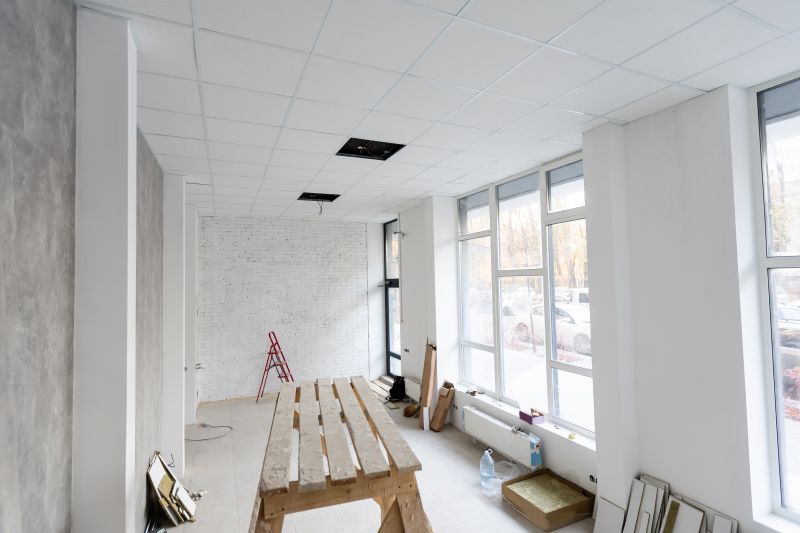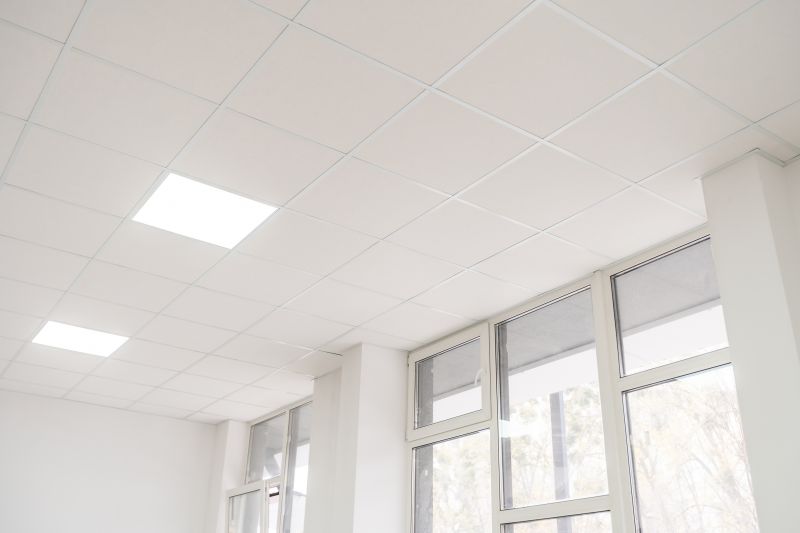Suspended Ceilings Installation
Suspended ceilings installation involves fitting a grid framework and lightweight tiles beneath an existing ceiling to create a clean, attractive, and functional overhead surface. This system conceals electrical wiring, ductwork, and plumbing while offering easy access for maintenance. Professional installation is important because precise leveling, secure suspension, and correct tile placement are essential for long-term stability, acoustic performance, and safety compliance.
Benefits of Suspended Ceilings Installation
- Enhanced Aesthetics
Suspended ceilings create a uniform, modern look that hides blemishes, pipes, and cables. A wide choice of tile textures and colors allows seamless integration with any interior design.
- Improved Acoustics
Acoustic tiles absorb sound, reducing echo and noise levels in offices, classrooms, and homes. Better sound control leads to a more comfortable and productive environment.
- Energy Efficiency
By lowering the ceiling height, the system reduces the volume of air that requires heating or cooling. Certain tile options also provide additional insulation, helping regulate indoor temperatures.
- Easy Maintenance Access
Removable tiles make it simple to reach HVAC systems, wiring, or plumbing for repairs and upgrades. This convenience minimizes downtime and disruption to daily activities.
- Fire and Moisture Resistance
Many suspended ceiling tiles are designed with fire-rated and moisture-resistant materials, enhancing overall building safety and durability in humid areas.
Our Service
- Connects you with skilled professionals in your area.
- You’ll receive fast and accurate quotes.
- Select the best offer based on your needs.
- Let local contractors handle the job for you!
FAQs About Suspended Ceilings Installation
How long does suspended ceiling installation take?
A typical room can be completed in one to two days, depending on size and complexity.
Can lighting and air vents be integrated into the ceiling tiles?
Yes, installers can fit recessed lights, HVAC vents, and other fixtures directly into the grid system.
What ceiling height is required for a suspended system?
Most installations need at least three to four inches of clearance between the existing ceiling and the new grid.
Are suspended ceilings suitable for residential spaces?
Absolutely—basements, home theaters, and finished garages often benefit from the aesthetic and acoustic advantages.
How do I clean suspended ceiling tiles?
Tiles can be dusted with a soft brush or vacuumed; some varieties are washable with mild detergent and water.
Fill out the contact form now to request professional suspended ceilings installation and enjoy the lasting benefits of a stylish, efficient, and easily maintained ceiling system.







